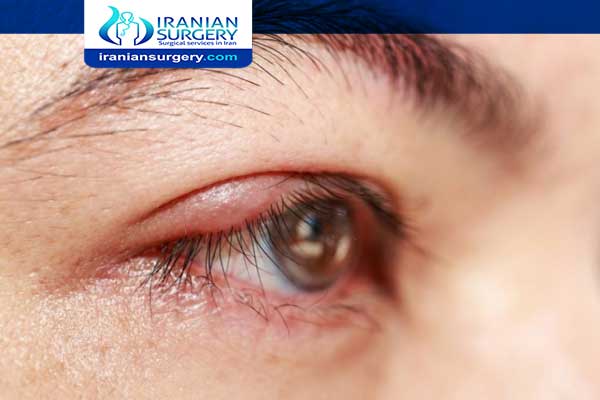Chalazion surgery steps

Chalazion surgery steps
A chalazion is a chronic noninfective inflammation of the sebaceous glands of the eyelid that affects the meibomian glands in the tarsal plate. Clinically, it results in a painless, firm nodule of the eyelid. Marginal chalazia are caused by inflammation of the gland of Zeis located at the lid margin. They can affect both the upper and lower lids. Acne rosacea and posterior blepharitis are commonly associated with chalazion. Hyperimmunoglobulinemia E (Job syndrome) can be associated with aggressive chalazion.
Do I need to do anything to prepare?
Chalazion surgery isn’t considered a major surgery, but it does involve anesthesia.
Depending on your health needs, age, and health history, you may be given a local anesthetic that only affects your eye area or a general anesthetic that completely puts you to sleep for the procedure.
Before surgery, make sure to tell your doctor or anesthesiologist about any medications you’re taking, including:
• over-the-counter (OTC) medications
• prescription medications
• vitamins and supplements
• herbal remedies
About Iranian Surgery
Iranian surgery website is an online medical tourism platform where you can find the best eye Surgeons in Iran. The price of a eye surgery in Iran can vary according to each individual’s case and will be determined based on medical document and an in-person assessment with the doctor. So if you are looking for the cost of eye surgery in Iran, you can contact us and get free consultation from Iranian surgery.
How is it done?
Surgery may take place in a hospital, but some clinics might perform it directly in the office. Before the surgery, you’ll be given anesthesia, so you won’t feel anything during the procedure.
Once the anesthesia has taken effect, the surgeon performs these steps:
1. uses a clamp to keep your eye open
2. makes a small incision on your outer eyelid (for a larger chalazion) or inner eyelid (for a smaller one)
3. scrapes out the contents of the chalazion
4. closes the incision with dissolvable stitches
Read more about chalazion surgery in Iran
Is there any aftercare involved?
After surgery, you’ll be prescribed antibiotics. In some cases, you might also be given a steroid ointment.
Make sure to take any prescribed medications. The antibiotics will help keep the site from becoming infected, and steroids can help treat any inflammation you might experience after the surgery.
You may also be given eye pads or an eye patch to protect your eye.
Don’t be alarmed if you notice some swelling or bruising around your eye. The surgical site may also leak a reddish fluid for a few days. All of these are normal.
You can use a cold compress on your eye a few hours after your surgery to reduce swelling.
Try applying moist heat to the site the day after your surgery. Your surgeon may even send you home with detailed instructions on how do this. Using moist heat on the surgery site three times a day can help the wound to drain and reduce the chance of the chalazion returning.
Read more about After lasik eye surgery

Following surgery, you’ll want to avoid:
• rubbing or touching your eyes
• wearing contact lenses for a week
• getting water in your eyes when showering
• swimming
• wearing makeup for one month
Read more about Flying after corneal transplant
How is a chalazion surgically removed?
Surgical removal of a chalazion is an outpatient procedure. Before the procedure, your doctor will give you a local anesthetic to numb the area around the chalazion. Next, your doctor will place a clamp to help hold your eyelid in place for the procedure. That way, you will not need to worry about keeping your eyelid open for the procedure. The doctor will then make a small incision in the eyelid and remove the chalazion with a special instrument. The location of the incision (front or back of the eyelid) depends on the size of the chalazion. Small chalazia can be removed by making an incision on the inside of the eyelid. If your chalazion is large, the doctor may make an incision on the front of the eyelid and close it with dissolvable stitches.
Read more about corneal collagen cross linking procedure
After the doctor Kellogg Eye Center Chalazion Treatment 2 removes the chalazion, they will remove the clamp and control any bleeding by applying pressure. The recovery time is normally very short after chalazion removal. You can use over-the-counter pain medication to control discomfort. Your doctor will prescribe an antibiotic to prevent infection. He/she may also prescribe a steroid drop or ointment to help calm inflammation. Follow your doctor’s instructions carefully on how often and how long you should use the medicine. You can also use cold compresses after surgery to help reduce swelling. Be sure to maintain good hygiene of your eyelids. Do not wear contact lenses for about one week. These measures will help prevent infection. Chalazion removal is a very safe surgery. Serious complications are very rare. The most common complications are that people who have one chalazion are at risk for developing more chalazia in the future. Very uncommon risks include bleeding with bruising and infection.
Read more about medical tourism in Iran

How is a chalazion treated with an injection?
Another method of treating chalazion is injection. During this procedure, your doctor will inject anti-inflammatory medication (usually corticosteroids) directly into the affected area. This will help reduce inflammation and the size of the chalazion over time. If the chalazion has not resolved within a few weeks, your doctor may recommend that you have another injection. This is a safe procedure. One possible complication is the lightening of the skin around the injection. That is why doctors often do not recommend the injection for people with darker skin color.
Read more about Cataract surgery
What do you do after chalazion surgery?
The surgical site may also leak a reddish fluid for a few days. All of these are normal. You can use a cold compress on your eye a few hours after your surgery to reduce swelling. Try applying moist heat to the site the day after your surgery.
Will chalazion come back after surgery?
Most people recover from a stye or a chalazion after it goes away on its own or after treatment with warm compresses or medication. If the stye doesn't respond to these therapies, surgery is usually effective. If your doctor removed the entire stye or chalazion, it should not recur.\
Read more about Lens Implant Surgery
Treatment
Topical antibiotic eye drops or ointment (e.g., chloramphenicol or fusidic acid) are sometimes used for the initial acute infection, but are otherwise of little value in treating a chalazion. Chalazia will often disappear without further treatment within a few months, and virtually all will reabsorb within two years. Healing can be facilitated by applying a warm compress to the affected eye for approximately 15 minutes 4 times per day. This promotes drainage and healing by softening the hardened oil that is occluding the duct.
If they continue to enlarge or fail to settle within a few months, smaller lesions may be injected with a corticosteroid, or larger ones may be surgically removed using local anesthesia. This is usually done from underneath the eyelid to avoid a scar on the skin. If the chalazion is located directly under the eyelid's outer tissue, however, an excision from above may be more advisable so as not to inflict any unnecessary damage on the lid itself.
Read more about Vitrectomy Surgery
Eyelid epidermis usually mends well, without leaving any visible scar. Depending on the chalazion's texture, the excision procedure varies: while fluid matter can easily be removed under minimal invasion, by merely puncturing the chalazion and exerting pressure upon the surrounding tissue, hardened matter usually necessitates a larger incision, through which it can be scraped out. Any residual matter should be metabolized in the course of the subsequent healing process, generally aided by regular appliance of dry heat. The excision of larger chalazia may result in visible hematoma around the lid, which will wear off within three or four days, whereas the swelling may persist for longer. Chalazion excision is an ambulant treatment and normally does not take longer than fifteen minutes. Nevertheless, owing to the risks of infection and severe damage to the eyelid, such procedures should only be performed by a medical professional.
10 common question about chalazion surgery steps
[kkstarratings]




7 Comments
I had cosmetic surgery on my bottom eyelids. One month later I hot a gigantic chalazien. Its how almost 3 months and it’s still there. Much smaller but still there. Will it go completely away, or will I as always have a small bump on my eyelid?
hello, dear christine, it ‘ll probably vanish in the course of time but that ‘s a good idea to show it to your doctor in your country. did you do eyelid surgery in Iran?
I have had three chalazion surgeries in which were unsuccessful. I know have scarring in my eyelid which resulted in a huge hard bump on my eyelid and my eyelashes are not growing back. Will I need to get the scar surgically removed? Will my eye ever go back to normal?
Did your eye ever go back to normal? I’m having the same problem
The surgical incision should heal in about 7 to 10 days. But it’s a good idea to avoid any activities that could potentially injure your eye for at least two weeks. As you recover, apply moist heat to your eye three times a day for 10 minutes at a time. Continue doing this for five days after surgery.
it s important to keep your eye safe and away from any harmful act.
my eye start to grow. on my lid at first it were saml my right lid then it grow i feel heavi on lid. i dont go out much id odnt kno is i sould scare. i funde chalazion on inter net. what chalazion? and how i treet? do you treat you hav more plastik surgeri. will chalazion scar my lid?
Hi, we are the Iranian Surgery and treatment is also one of our features. We think what you need is information on your condition. And, please, if you have more questions, our consultant would be happy to lead you on. But the better thing is to go and see a physician.
The eyelid protrusion is another mass on the edge of the eyelid that initially looks like an eyelash. A chalazion is a small bump on the edge of the eyelid under the skin that is caused by the obstruction of the outlet duct of the sebaceous glands of the eyelid and the accumulation of secretions in the gland. In this case, control of these diseases by an ophthalmologist will help prevent the recurrence of chalazion. Larger chalazion has an unpleasant appearance and is aesthetically problematic, while their spontaneous healing may take several months. Large bumps, especially on the upper eyelid, put pressure on the cornea and cause astigmatism and blurred vision by deforming the cornea.
The main treatment for chalazion is surgery. This Chalazion Surgery is usually performed under local anesthesia, although children and some adults may not tolerate it and may need general anesthesia. The eyelid is anesthetized and then a small incision is made inside the eyelid to remove the contents of the cyst and remove the cyst. After surgery, antibiotic drops or ointment are usually prescribed. Another method is to inject steroid drugs into the lesion at the edge of the eyelid, which is usually used in cases where many small bumps cannot be surgically removed. Chalazion Surgery scars are not an issue, and it rarely affects the patient’s eyelid.